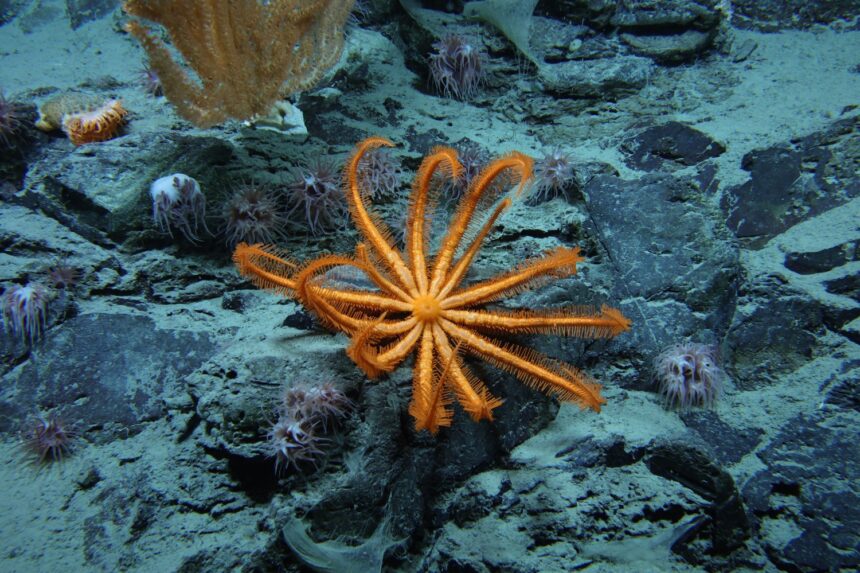We’ve got better visuals of Mars than we do of our own ocean floor—and by a much larger margin than you’d think.
A new study in Science Advances crunched the numbers from 43,681 deep-sea dives conducted since 1958 and comes to a mind-blowing conclusion: we’ve visually observed just 0.001% of the deep seafloor. That’s an area just slightly larger than Rhode Island—or about a tenth the size of Belgium—across about 70% of the planet.
The average depth of the ocean is 12,080 feet (3,682 meters), making it impossible to visually observe unless you’re Aquaman or have a deep-sea submersible. As of June 2024, 26.1% of the global seafloor has been mapped, according to NOAA, though visual observation is a tougher nut to crack.
“This small and biased sample is problematic when attempting to characterize, understand, and manage a global ocean,” said Susan Poulton, a researcher at the Ocean Discovery League and co-author of the paper, in an email to Gizmodo.
Scientists estimate that two-thirds of the 700,000 to 1,000,000 species in the ocean (excluding microorganisms) have yet to be discovered or officially described, according to NOAA, making the vast amount of unexplored seafloor a remarkable venue for new research.
Making matters worse, nearly two-thirds of all visual seafloor observations have taken place within 200 nautical miles of just three nations: the U.S., Japan, and New Zealand. Almost every single deep-sea dive has been carried out by institutions from just five countries: those just mentioned, plus France and Germany.
“Imagine trying to tell the story of critical environments like the African savanna or the Amazon rainforest using only satellite imagery and DNA samples without ever seeing what lived there,” Poulton said. “It wouldn’t paint a very complete picture.”
Furthermore, the study found a heavy bias in sampling toward shallow waters (less than 6,562 feet deep, or 2,000 meters), even though nearly three-quarters of the seafloor lies deeper. Features like canyons and escarpments—and specific ones, at that—get all the love, while vast regions of undersea ridges and plains remain essentially overlooked.
We owe it to ourselves to better understand these vast sweeps of the deep sea, the research team posits. They’re not wrong. The deep ocean plays a crucial role in everything from climate regulation to the production of oxygen and medicine, yet our visual assessment of it is a very slim slice of the pie. We’re missing a huge amount of information about not just the creatures that inhabit these zones, but the way these zones contribute to Earth’s global processes.
Some thorough deep-sea research was born out of commercial interests, including research into the Clarion-Clipperton Zone, a region of deep sea mining interest. That’s led to the discovery of hundreds of new species and even hints at new mechanisms of oxygen production, which we might’ve missed entirely if companies hadn’t been eyeing the area for minerals.
The team’s findings come on the heels of the Trump Administration fast-tracking deep-sea mining, which could imperil species that inhabit the seafloor and midwater ecosystems. In the past six months, two research teams found evidence of creatures thriving underneath the seafloor, pushing the boundaries of where we know life to exist. Deep-sea mining will probe these disproportionately understudied reaches of the planet, potentially endangering species before science even has the opportunity to identify them.
If we want a representative picture of Earth’s largest and least-understood biome, we’ll need more nations, more institutions, and more tools to take the plunge, the study argues. At our current rate, by the team’s calculations it would take more than 100,000 years to visually explore the deep seafloor, leading the team to call for a “fundamental change in how we explore and study the global deep ocean,” as noted in an AAAS press release.
For now, we’re making global ocean policy, climate decisions, and biodiversity assessments with a shockingly small sample size. It would be in the interest of science—and the thrill of discovery itself—to innovate and scale how we explore the most inaccessible reaches of our world.
Read the full article here












